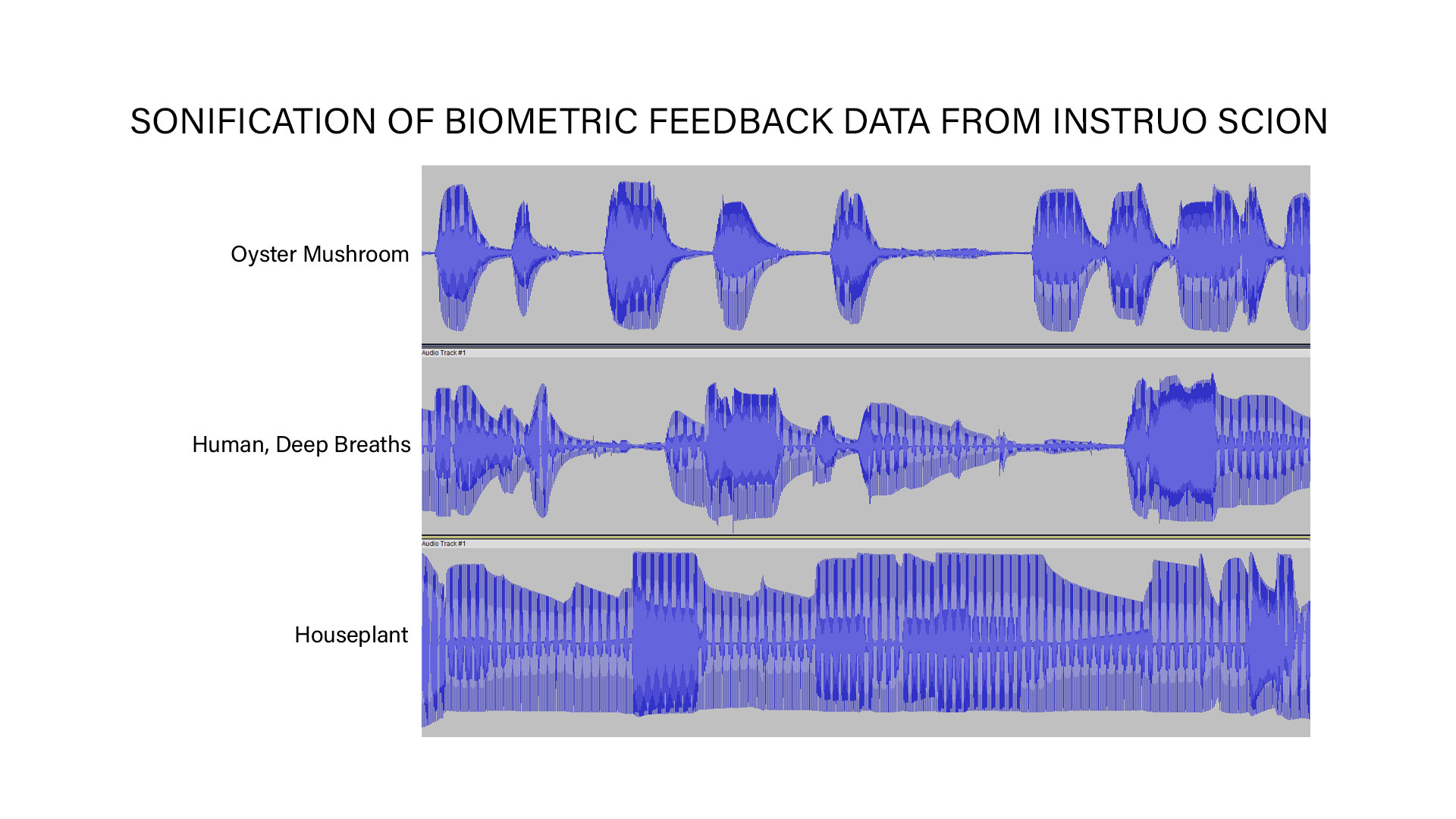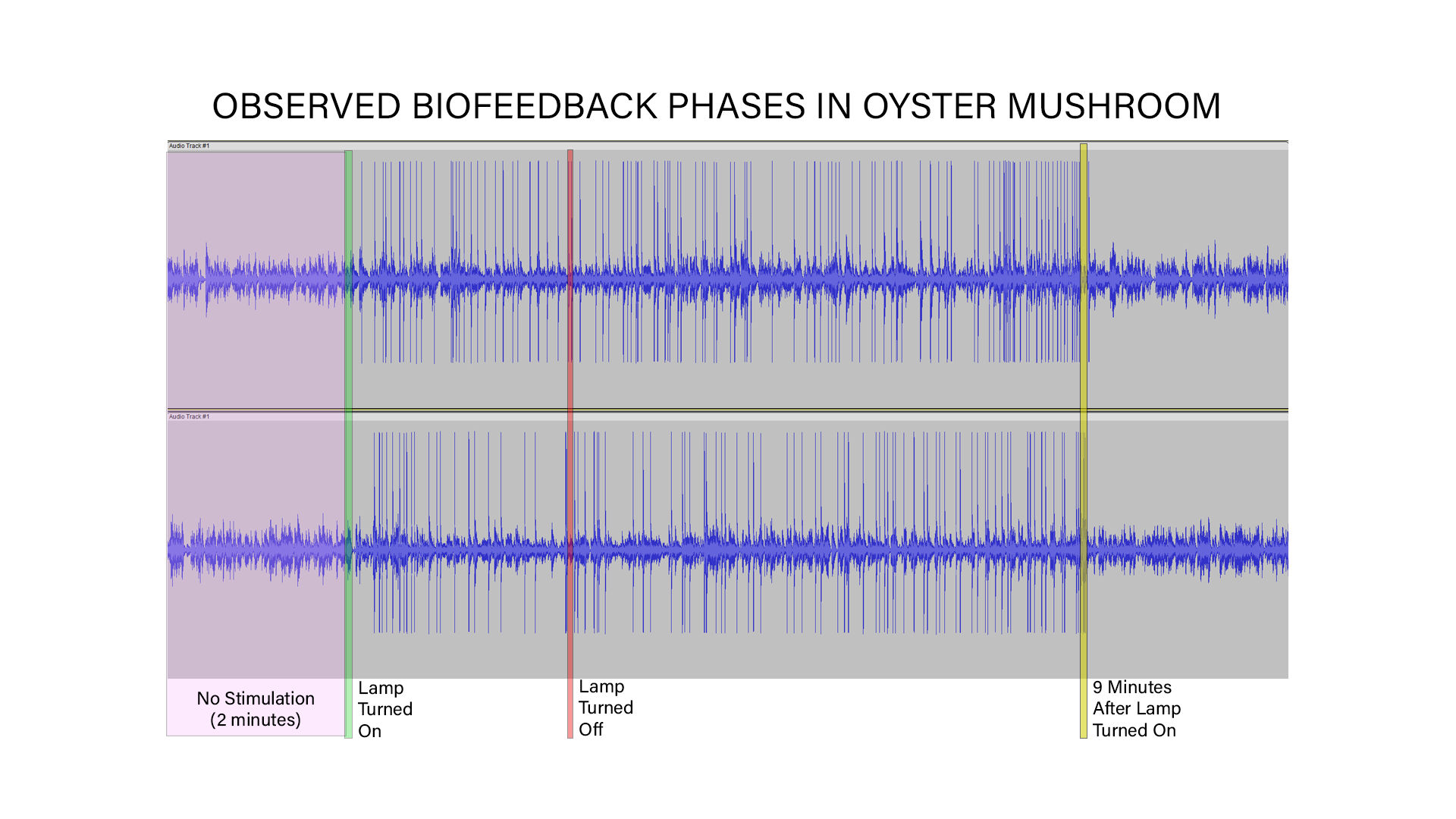On the Inherent Subjectivity of Musical and Scientific Instruments
How we perceive shapes how we understand. We might try listening more.

A 1942 survey found that 70% of its respondents typically dreamed in black and white. A survey using the same questions in 2001 found that 83% of respondents dreamed in color. A few studies have tried to figure out why this is, and the best explanation I’ve heard is that “true greyscale dreams occur only in people with black and white media experience.” That study tried exposing respondents to color or black and white media for an extended period before the survey.
Whenever we build new ways of seeing the world — such as that grand expansion of news photographs and television from monochrome to RGB — we form different relationships with what they show us. The same thread can be pulled across the history of science.
Electron microscopes revealed an entire micro cosmos we’d never acknowledged. The bioscience researcher Margaret McFall-Ngai writes:
“Our understanding of the biological world has always been fundamentally linked to how we are able to perceive it, and what we can perceive is tied to the technologies we have for seeing. This has always been the case. During the earliest periods of biological classification, people organized things into categories of animals and plants, because these were the kinds of organisms they could see. Then, in the seventeenth century, Anton van Leeuwenhook became the first person to actually see microbes.” (from Noticing Microbial Worlds, 2017)
The way we categorized all life on our planet expanded when we finally saw something we hadn’t seen before (and it has expanded many times since). What we perceive is what we “know,” and the rest is stuck being something else: abstract, intellectual, disconnected, unmoving. Microbes come to life when we look beneath a microscope. Stardust becomes tangible when we see new images of the Milky Way. As those visceral understandings change our frames of reference, she notes, we broaden the expansion of “living kingdoms” to include an ever-expanding palette.
Our instruments of science, tools of measurement, skew toward visual. Even charts, maps, diagrams are a visualization of information tangible to eyes first, intellect second.
I’ve been making experimental music in a literal sense. I’ve been eager to understand the voltage spikes produced by mushroom. One mushroom cap sends signals to the other through the underground network that connects them. The researcher Andrew Adamatzky identified voltage spikes as the medium of that communication. He found that they represent repeatable patterns that correspond to specific contexts. If so, that’s a very simple language found in a very surprising place: Adamatzky says he’s found 50 such “words” in an analysis of mushroom voltage data.
In the world of modular synthesizers, voltage can be the source of control for the pitch, harmonics and even speed of the sound it creates. Adamatzky had plugged sensors into the mycelia substrate of the oyster mushroom and found voltage spikes. These spikes would communicate information from exploratory hyphae as the mushroom spread out in search of nutrients (and to avoid danger).
Voltage spikes are also the lingua franca of modular synthesizers. Modules communicate with one another through voltage. When you make music with them, you aim to create rhythms by looping voltage sequences. If Adamatzky’s grammar theory is correct, then mushrooms and synthesizers communicate in the same way. For the types of synthesizers we’re talking about, the way a mushroom communicates is well-suited to the act of creating electronic music.
I am not the first person to make music this way. Mycolyco is a famous YouTubing Mycomusicologist, and he’s well ahead of me on these curves. In fact, even the module I used to convert these mushroom spikes into control voltage are commercially available (and from more than one company). I say this just to acknowledge that I’m part of a scene with this, and hopefully contributing something through the perspective of cybernetics.
Along the way I’ve come to a new understanding of the phrase “musical instrument.”
The Musical Instrument(s)

First, some clarity on what a modular synthesizer is. For those who aren’t familiar, it’s a synthesizer with no keyboard. The music is produced by moving electricity between modules. There are some knobs to adjust the speed and structure of that electric signal, but generally, my goal is not to touch them. All of them have holes in them that can either take or send voltage through the colorful wires you see pictured.
You can send voltage to control, say, pitch, and any voltage flowing through that wire will essentially “turn the knob up and down” according to the voltage that flows through it. You can adjust that voltage using voltage producing modules which you can then set to certain sequences or patterns.
The synthesizer I’ve put together uses the voltage coming out of mushrooms to do that. It doesn’t loop, relying on the mushroom’s interior voltage patterns for any musicality. As a result, the mushroom can produce electronic music through voltage spikes. The mushroom sends voltage out the same way a synthesizer does. You can plug it into various modules and that voltage will shape and change the settings of those modules over time. The intensity of the voltage has an effect: big voltage spikes, big changes. Patterns of voltage, patterns of sound.
The mushroom is stable, and peaks come at a fungal pace, so those changes are slow and steady. If I set the instrument to a greater sensitivity, though, even minor fluctuations are amplified.
The Scientific Instrument(s)
This means I can listen to the mushroom’s responses to changes in the environment. For clarity’s sake, I’m going to show you images of the sound waves so it can make sense in an email.
Here are three examples of sound waves that emerge from the synthesizer. Each is the result of voltage entering the synthesizer through TENS cables, which are designed for measuring biofeedback from living materials. The chart below shows three wave forms captured by recording the synthesizer into my home computer. When they are skinny, it means there is sparse sound, which for a synthesizer means there is low voltage. Fat, wide bits are the presence of electrical voltage.

You can see that the three have different patterns. The mushrooms spike and fade quickly. My breaths create a slower decline in the signal.
The cables used for my fingertips and the mushroom did not work for the houseplant (row 3) at all. Using the same equipment gives me flat lines. To get any measurements, I had to use another set of cables, which had a greater sensitivity. It’s useful only in showing how the information from the synthesizer is not a “default,” but the product of real electrical activity.
A Song About Lamps
I first heard the mushroom “song” while listening to a nice repetitive ambient pulse. Over the course of 11 minutes, without doing anything to the instrument settings, the pulses began to crackle and overpower the volume knob. (I captured a recording of this sound about halfway through - the second half of the recording is the “resting state”). A regular pattern of distorted spikes started appearing. This must have been in response to something in the system, I thought, and I realized I’d turned on a desk lamp directly over the mushroom. I could only speculate. I turned the lamp off.
It was a day later when I realized something rather startling. If the spikes in voltage were the mushroom responding to light, and the synthesizer had begun to distort because of a corresponding rise in the intensity of mushroom-derived voltage spikes, then — bear with me — did I just have a “conversation” with a mushroom?
I am skeptical of any claims to “sentience” in machines and I don’t think that’s a problem machines need to solve. My dog is sentient. We have sentient critters to interact with already and they are dying en masse every day. Yes, if we build a machine with the sentience of a dog we have really, really Done Something. I’m just not sure what, or why we would have done it, and I doubt it is a higher priority than saving what sentience we did not design and do not control.
In the recordings, a mushroom has sensed the world, responded to it, given me information. I turn off the light in response. That’s a “conversation” with a sentient being, it’s just not the conversation our species demands.
The mushroom can sense, this is obvious. It moves, it grows toward food and light, aims to get away from excessive heat. We can hypothesize that the light activation from the “heat” signal in the mushroom began sending spikes to signal a retreat away from the blazing desk lamp. This is what mushrooms do.
What was unusual about the situation was only the sonification of that response. Sentience became accessible. The mushroom was controlling an electronic device and that device happened to communicate with me. And this speaks to this idea of the “musical instrument” as a tool that changes our relationship with what we observe, just as all of our visual apparatus and scientific instruments have done before it. There is a bolder, more visceral presence of mushroom activity when it is being performed as a musical hum that begins to crackle with electric distortion. It changes from a mushroom “mushrooming around” in imperceptible slow-motion to a living being that I co-exist and interact with.
Sound, like speech, like text, lends itself to a more visceral, emotional connection to the information that emerges from complex operations, be they our brains, a very large data set, or the stipe of a mushroom. It moves from information to interaction, and interaction is an experience built, at a minimum, for “two.” A third intelligence emerges from that interaction, in the space between the things exchanging information. You can call this the imaginary, or you can call this the information space, because information and imagination are forever intertwined.
Experimental Music
The next day I tried to replicate the experience. I recorded the mushroom again, over 14 minutes. I recorded for two minutes without the lamp, then turned it on for two minutes, then turned it off.
Here’s the complete recording (it’s long and not very musical, I wanted to find the spikes foremost) from the point that the lamp was turned on. The spikes present as bass notes, which were only able to be triggered when voltage entering the system went beyond a certain threshold. The more active twinkly stuff is low-level voltage activity.
To communicate, we need patterns. That pattern can be as simple as “on/off.” Denser communication means the signal has to represent the same information using the same (or similar enough) patterns of information. That can be words or electric spikes or numbers or wave shapes — but they must come to signify the thing it represents. You can’t call a tree a tree and then call it George. If you do, you have to connect it eventually: “George is the tree.” Or “George” (point at tree). Even once will do, but the more the better.
So, were there patterns in the mushroom activity? Enough that we might call it “communication?”
Here are some results.

As you can see, the spikes began almost immediately when the lamp was turned on. They were quite likely in response to the lamp (either light or heat). In both cases the spikes lasted about 9 minutes (or 7 minutes after the lamp was turned off) and then the mushroom went back to a resting state.
Is this communication? Well, it’s a signal. It’s evident that the light produced a response in the kind of signal the mushroom was producing. There are a range of interpretations, which weakens the information value of this signal. We see periods of intensity, but there is no order to that intensity that might tell us something about the mushroom’s perception. We have a binary: on and off, the vaguest of language, offering us no description. It could be responding to light, or to heat.
Perhaps more experimentation, beyond what I could do in a home office with a synthesizer, would tell us more. Adamatzky’s research suggests that there are patterns to be found across hundreds of recordings of similar spike patterns. I don’t dismiss that, in fact, I suspect it’s accurate. I’m just being careful to say that it isn’t present here.
A reaction to a change in the environment is nonetheless information. A car may start emitting smoke from its hood. It does not have to be sentient for that information to be understood by the driver. You know there is a problem. So, something has been communicated. The question between communication and information really concerns intent: did the mushroom mean to tell me (or some other fruiting body it was connected to) about the lamp? Was there an intent to transmit this information? We don’t need to see a message hidden in the voltage spikes to say yes. “Now the voltage is spiking” is a response. It is information.
Does the mushroom also possess a mechanism to receive and respond to this information? To say yes, it would be helpful if there was some pattern, because then the pattern could be understood in a useful way, one that can be interpreted and responded to. “Spikes on, spikes off” is a binary signal. Put enough of them together and you are quickly capable of creating so much meaning within a computer. Do the sequences of the spikes mean something?
The spikes zoomed out as you see above don’t seem to have any clear pattern within them. Zoomed in, however, and there was something interesting at the very end.

The sequence that occurred just before the return to rest were quite similar. There was a stray spike in Test A, but after that final shot of voltage the mushroom was silent for the remainder of the recording.
So: that’s fun. I can’t say this proves anything. I haven’t done a much more in-depth analysis of any correspondence in the voltage spikes within the excitement phase, and I have since eaten the mushrooms.

In any event, regardless of interpretation of patterns within the noise, I am intrigued by the role of sound as a conduit for accessing the “inner life” of a mushroom. With larger animals of the world, ourselves included, we learn to interpret behavior as information / communication. A dog barks, or “looks tired,” and you respond.
Plants are typically not as legible to us, at least not in an immediate sense. The joy of a Venus flytrap is in its real-time movement and response. The rest of the plant kingdom moves too slowly to really comprehend. Sadly, it isn’t even all that slow: take a photograph of a mushroom every hour for a mere 24 hours, and you could see it double in size. It’s our patience that’s lacking, our inability to perceive those changes in real time.
Sound is instant, voltage spikes immediate, and to my untrained amateur mycologist ears, this was revelatory. Experts, I understand you are rolling your eyes at me. It’s ok. I don’t have any claims to make through formal channels. I only want to tell you that I have stumbled into your world and found it to be very, very cool.
To know that the silent house plant is responding to us, instantaneously — even if that kinship is through the simple act of flipping a light switch on or off, triggering a series of voltage spike on and off — puts me into a new relationship to the slightly slower movements of these patiently emerging beings.
You can read more on the mushroom project starting here and the origins here.
‘Appetite for Deconstruction’ is part of an art-science research project supported by Science Gallery Detroit and in collaboration with Claudia Westermann, Vinny Montag and researchers at the Xi'an Jiaotong-Liverpool University (XJTLU).
As always, feel free to share, subscribe, or send feedback! You can even buy me a cup of coffee.





